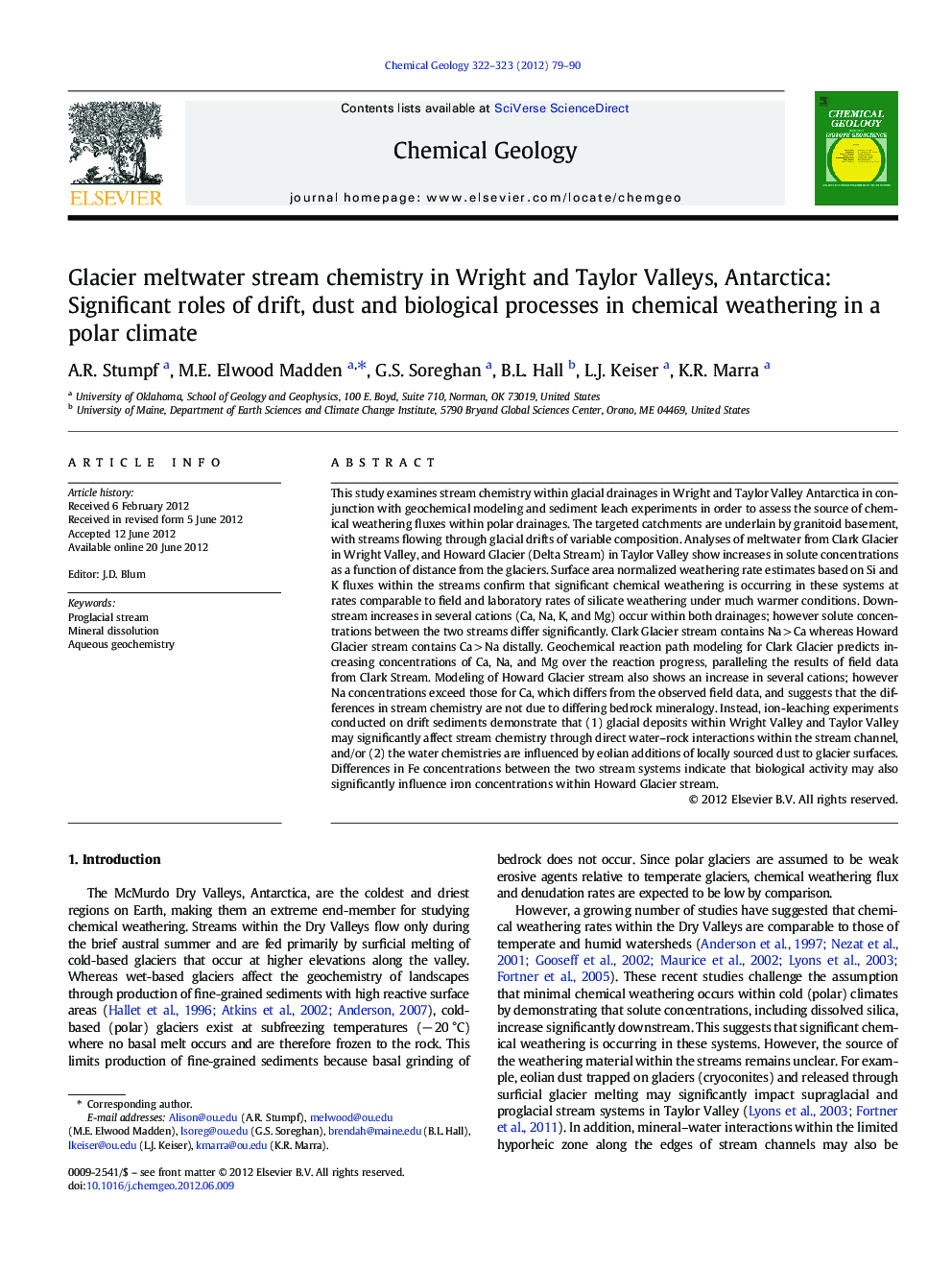| کد مقاله | کد نشریه | سال انتشار | مقاله انگلیسی | نسخه تمام متن |
|---|---|---|---|---|
| 4699330 | 1637640 | 2012 | 12 صفحه PDF | دانلود رایگان |

This study examines stream chemistry within glacial drainages in Wright and Taylor Valley Antarctica in conjunction with geochemical modeling and sediment leach experiments in order to assess the source of chemical weathering fluxes within polar drainages. The targeted catchments are underlain by granitoid basement, with streams flowing through glacial drifts of variable composition. Analyses of meltwater from Clark Glacier in Wright Valley, and Howard Glacier (Delta Stream) in Taylor Valley show increases in solute concentrations as a function of distance from the glaciers. Surface area normalized weathering rate estimates based on Si and K fluxes within the streams confirm that significant chemical weathering is occurring in these systems at rates comparable to field and laboratory rates of silicate weathering under much warmer conditions. Downstream increases in several cations (Ca, Na, K, and Mg) occur within both drainages; however solute concentrations between the two streams differ significantly. Clark Glacier stream contains Na > Ca whereas Howard Glacier stream contains Ca > Na distally. Geochemical reaction path modeling for Clark Glacier predicts increasing concentrations of Ca, Na, and Mg over the reaction progress, paralleling the results of field data from Clark Stream. Modeling of Howard Glacier stream also shows an increase in several cations; however Na concentrations exceed those for Ca, which differs from the observed field data, and suggests that the differences in stream chemistry are not due to differing bedrock mineralogy. Instead, ion-leaching experiments conducted on drift sediments demonstrate that (1) glacial deposits within Wright Valley and Taylor Valley may significantly affect stream chemistry through direct water–rock interactions within the stream channel, and/or (2) the water chemistries are influenced by eolian additions of locally sourced dust to glacier surfaces. Differences in Fe concentrations between the two stream systems indicate that biological activity may also significantly influence iron concentrations within Howard Glacier stream.
► Solutes increase away from glaciers, confirming significant chemical weathering.
► Differences in stream chemistry are not due to differing bedrock mineralogy.
► Leaching experiments show that drifts may significantly affect stream chemistry.
► Eolian additions of locally sourced dust to the glacier may also affect stream chemistry.
► Biological activity may influence aqueous Fe concentrations.
Journal: Chemical Geology - Volumes 322–323, 5 September 2012, Pages 79–90